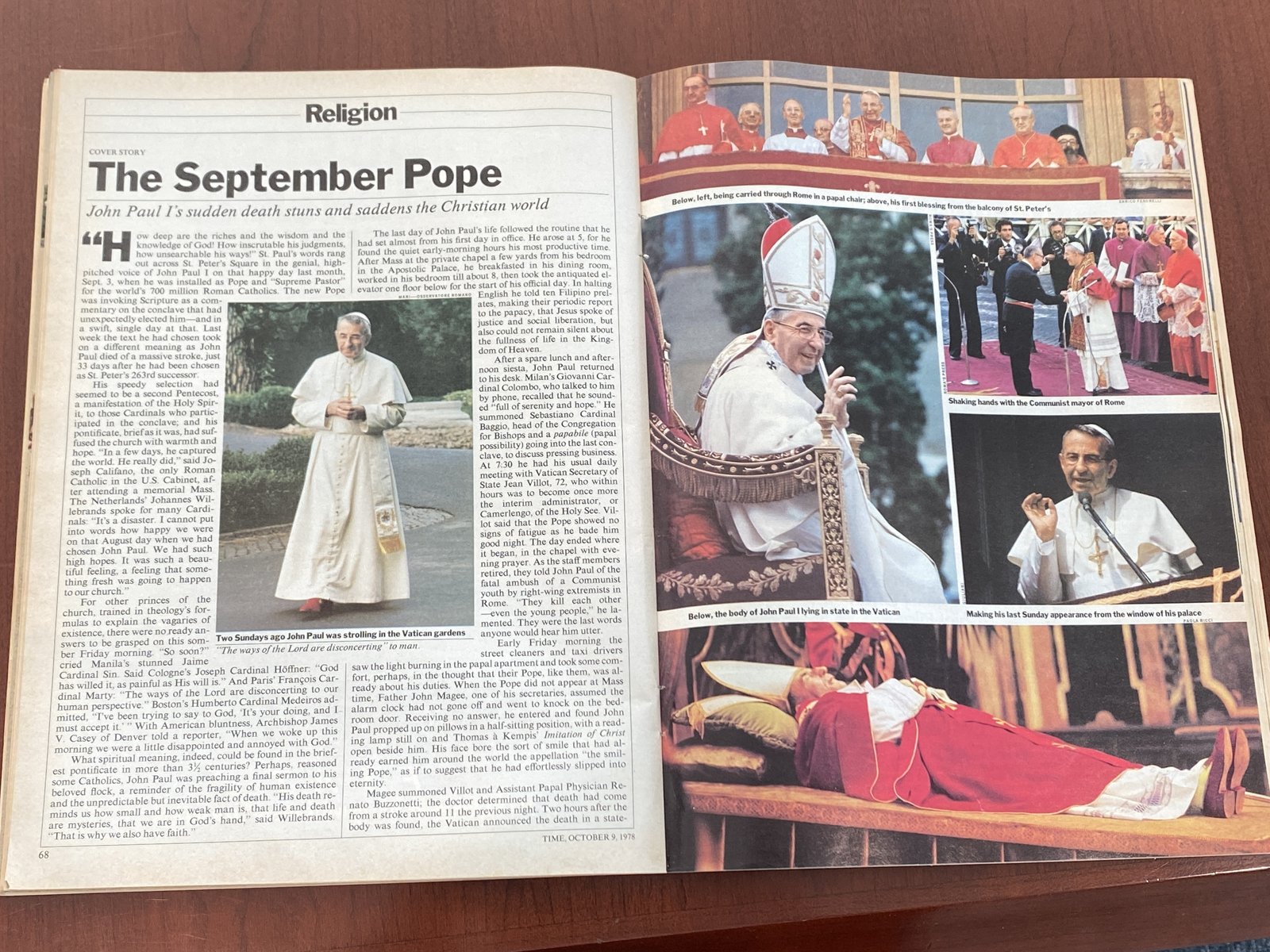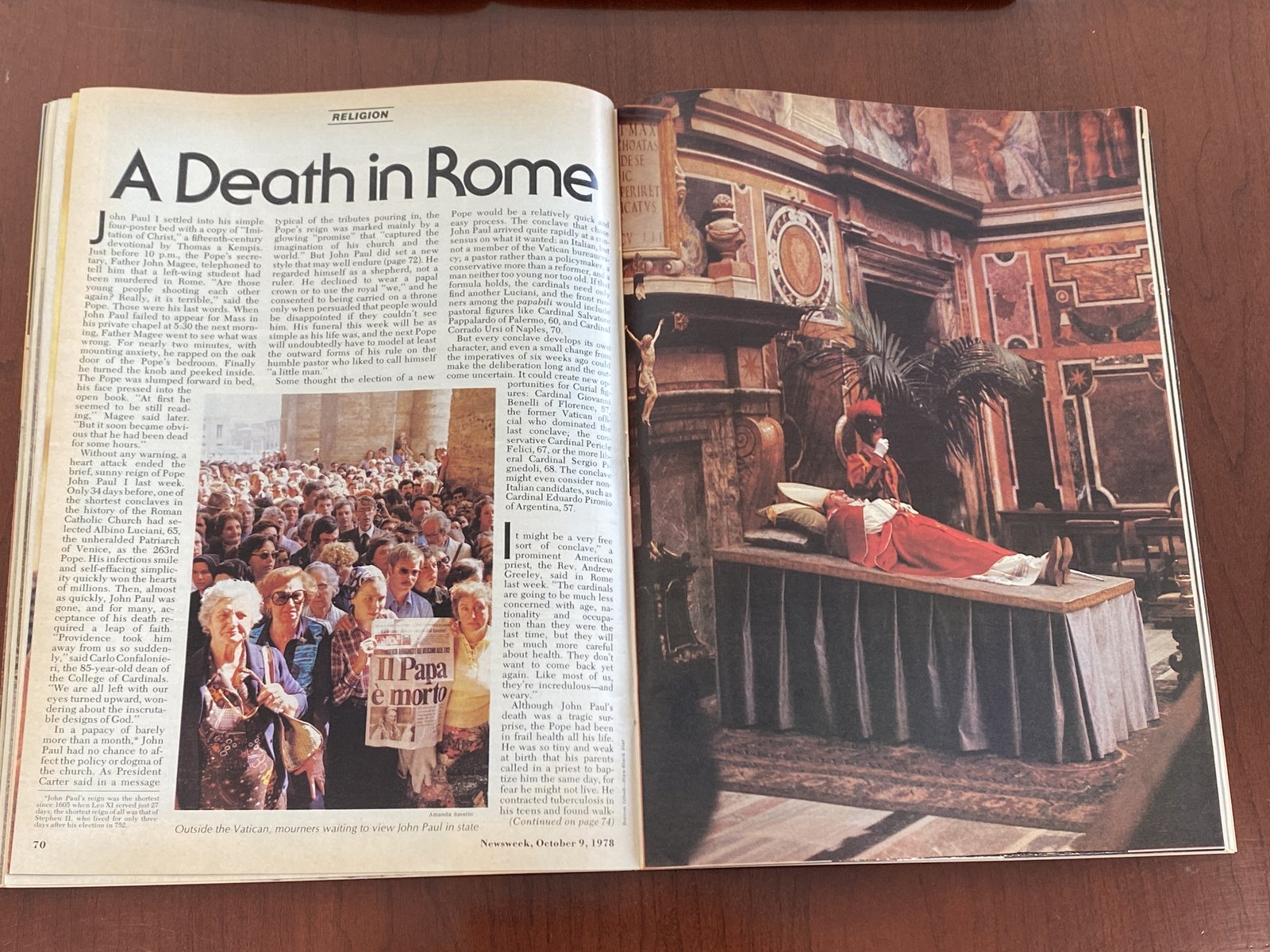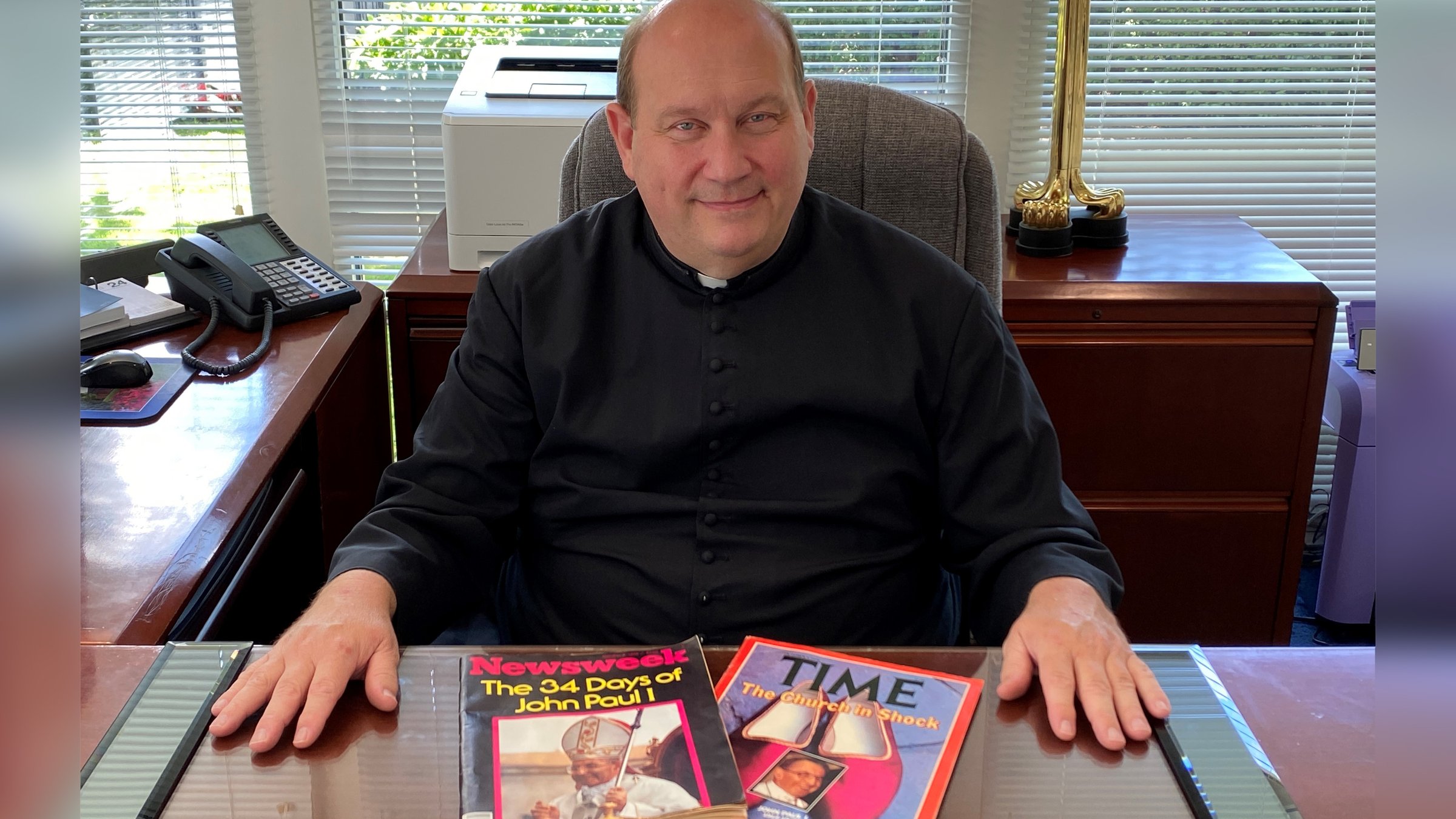Despite his death after just 33 days on St. Peter's chair, 'the smiling pope' left legacy of love; Pope Francis to beatify him Sept. 4
FARMINGTON – Fr. Walter Ptak lights up when he reminisces about 1978. For Fr. Ptak, the year was pivotal in his discernment to the priesthood. For all Catholics, it was a historic year with three popes in less than three months, one of whom held the shortest papacy in modern history. Pope John Paul I reigned as the Holy Father just 33 days, from August 26 to September 28, 1978. This September 4, Pope Francis will beatify the Italian pope who was born Albino Luciani in 1912.
Catalyst for a Religious Vocation
Fr. Ptak, pastor at Our Lady of Sorrows in Farmington, was about to begin his senior year at Our Lady of Mount Carmel High School in Wyandotte in August 1978. When he heard Pope Paul VI had died on August 6, Fr. Ptak watched news coverage from his family’s cottage in northern Michigan, and then watched more as they waited for the next pope to be elected. He was thrilled to witness it unfold and see the white smoke rising from the Sistine Chapel on August 26.

“At the time, we thought his double name ‘John Paul’ was strange,” said Fr. Ptak. “Then when Pope John Paul I came out on the balcony that day, he had a big smile on this face. I thought he looked friendly and it made me think that maybe the priesthood is something I should think about more. He seemed like a nice father figure, like a really loving dad.”
Pope John Paul I was known as “The Smiling Pope” for his cheerful demeanor. He was the first pope to choose two names and did so to honor his predecessors, John XXIII and Paul VI.
33 days later, on September 28, as Fr. Ptak was decorating his high school gym with friends, they received word that Pope John Paul I had died to the shock of Catholics around the world.

“I remember that day so vividly,” said Fr. Ptak. “I was the school president and we were preparing for the homecoming dance when we heard. None of us could believe it. We couldn’t believe we were going to have another new pope when we were just getting to know this one.”
Fr. Ptak entered the seminary immediately following high school. Even though he had quietly thought about becoming a priest as early as 7th grade, he credits Pope John Paul I as the one who “stirred his vocation,” and Pope John Paul II as the “icing on the cake” who helped him realize that God was calling him to the priesthood.
Knights’ Honor
Pope John Paul I’s name lives on at St. Blase Parish in Sterling Heights, where the Knights of Columbus Council established in 1976 was named for him in 1979. While current members of the Pope John Paul I Council #6865 don’t have personal memories of the short-term pope, they are proud to be his namesake.
“I’ve been a member of the council for 4 years so I wasn’t here when it was named for Pope John Paul I, but we don’t choose names lightly,” said Ed Skupny, Grand Knight of the St. Blase council. “His name is our legacy. He was a pope only 33 days but we recognize that he also served as a bishop and priest for many years, and we honor him for all of that.”

On September 24th, the council will host its annual spaghetti dinner, a fundraiser for a Haitian outreach mission. This year, the event will be dedicated to John Paul I in recognition of the beatification three weeks earlier in Rome. Council members will display photos of John Paul I at the dinner and help attendees get to know the relatively unknown pope.
When in Rome
Fr. Nick Zukowski, pastor of St. Martin de Porres in Warren, also distinctly recalls 1978. He studied at the Pontifical Gregorian University in Rome from 1977 to 1981. Much to his disappointment, he was in London visiting a friend when Pope John Paul I was elected that summer. He and his friend were having a drink at a pub to celebrate his arrival, and with no social media or cell phones at the time, they didn’t know a new pope had been elected while they were catching up.
“I thought, no…I was in a pub having a pint while the Holy Father was elected in Rome at the conclave!” said Fr. Zukowski.
Not long after he returned to Rome, he attended a Wednesday audience with Pope John Paul I. He saw the new pope being carried high in the papal chair and gripping it tightly. Fr. Zukowski doesn’t know if the tight grip was due to the realization of the enormity of the role of pope or because of the bumpy ride. Either way, he noticed that Pope John Paul I grinned from ear to ear throughout the audience.
On the day Pope John Paul I died, Fr. Zukowski was in the seminary chapel for morning prayer. As he was praying, one of the seminarians changed the numbers of the breviary to the Office of the Dead.
“I asked if a faculty member had died and someone said, ‘No, the pope died.’ I was stunned,” Fr. Zukowski said. “When I was listening to Vatican radio later that morning, the news anchor said that some people are feeling a little angry with God today because He took away Papa del Sorrisso, which is ‘Pope of the Smile’ in Italian.”

Fr. Zukowski felt privileged to attend the funeral Mass for Pope John Paul I. As he was in line to pay his respects with thousands of other people, he saw a group of twelve gathered in a side chapel for a baptism.
“It was a moment of the circle of life, with 10,000 people mourning while 12 people – like the original disciples – were rejoicing. I’ve always remembered that,” Fr. Zukowski said.
When Fr. Zukowski was appointed pastor of St. Mary Queen of Creation Parish in New Baltimore in 1993, he came upon a picture of Pope John Paul I that he had forgotten he owned as he was unpacking boxes. Fr. Zukowski recalled that Pope John Paul I ended his inaugural Angelus from his window at the Vatican with, “I have neither the ‘wisdom of the heart’ of Pope John, nor the preparation and culture of Pope Paul, but I am in their place. I must seek to serve the Church. I hope that you will help me with your prayers.”

As he hung the picture on his wall, he said the pope’s words as a prayer and then said to the picture, “If I last here as pastor longer than 33 days, I’ll keep your picture up for the rest of the year.”
Fr. Zukowski remained at the parish until 2014.
Pope Francis will celebrate the beatification Mass on September 4 in St. Peter’s Square. A second Mass is scheduled for September 11 in northern Italy’s Canale d’Agordo, the hometown of the then-Blessed Pope John Paul I.











